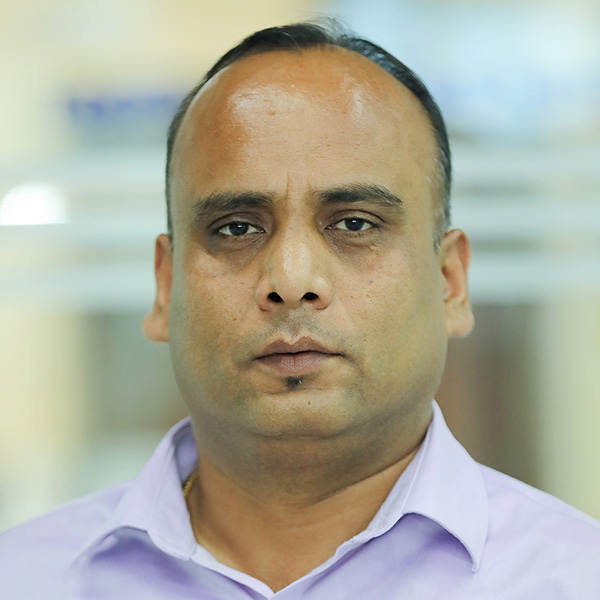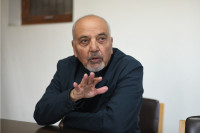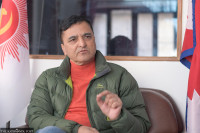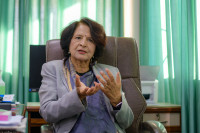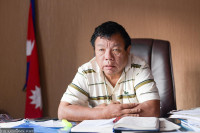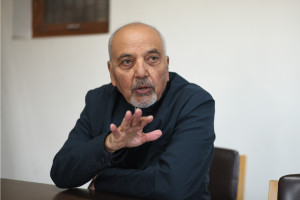Interviews
Nepal should see climate change as an opportunity
Eighteen years since the signing of the CPA, no one believes Nepal will go back to war. And that is the number one criteria for success.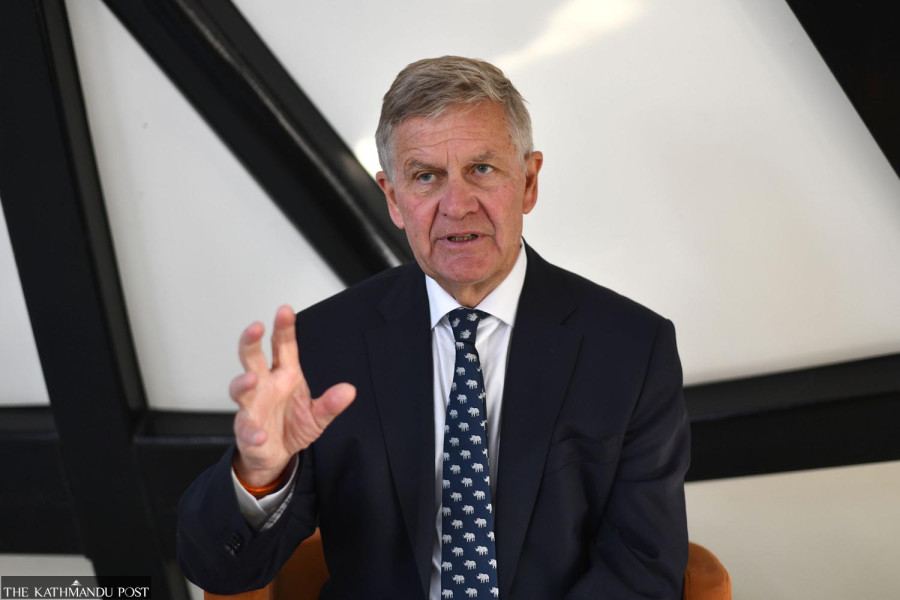
Anil Giri & Durga Khanal
Erik Solheim has held senior portfolios with the Norwegian government, including as its Minister of International Development. He has also served as the UN Under-Secretary-General. Currently, he is helping make China’s Belt and Road Initiative environmentally sustainable. Separately, in the early 2000s, Solheim had played the role of a mediator between Nepal’s warring Maoists and the mainstream political parties. Anil Giri and Durga Khanal caught up with the veteran Norwegian diplomat during his recent trip to Nepal.
You visited Nepal after a long time. What was the purpose of your visit this time?
The main purpose now was to look into the opportunities for Nepal in turning climate change into an opportunity for renewable energy—solar and hydropower. And then creating jobs and prosperity by acting on climate. We presented to the Nepali prime minister, to a parliamentary committee and to independent hydropower developers, the opportunity to get money from the global carbon market to develop more hydropower in Nepal.
Nepal has one of the greatest hydropower potentials. Some people say 80 gigawatts while only 3.5 gigawatts of that has been developed. So, this is an enormous opportunity to create jobs, keep people from moving to the Middle East, and develop Nepal while going green. Solar has similar opportunities. So, that was the main purpose.
We also discussed the idea of using Nepal even more to showcase the effects of climate change. This is the third pole. And the melting of the glaciers here is one scary effect of climate change. Nepal is hosting a big conference to garner more global attention to the glacier issues and the third pole issues. We are happy to support this, advising the government on gaining international attraction.
Nepal is bearing the brunt of climate change. But we are not responsible for that. How can Nepal get climate justice and benefit from the climate fund?
Nepal is suffering from climate change but has not caused it. The United States emits more than 30 times per capita than Nepal. So, no one should blame Nepal or indeed other developing nations for climate change. Nepal should turn climate change into an opportunity. That's what China has done. That's why China is now doing so well with electric cars, solar panels and windmills. It's an opportunity to go green and create jobs. Indian Prime Minister Narendra Modi is doing the same. He launched a scheme for 10 million rooftop solar panels in India. It's because he's an environmentalist. But it's also because he wants to develop the nation, create jobs and prosperity and help local businesses thrive from solar panels.
After the US President Donald Trump became president again, the US has withdrawn from the Paris Climate Agreement. This has caused apprehensions around the world. How do you see this new development?
It's an absolute insult to the world that one nation, which has more than any other nation caused the climate problem, now tells the world to sort out the problem. However, for a nation like Nepal, it's much, much better to look for the opportunities because then you create economic development while going green. To go into solar 10 years ago had a huge cost. No one could afford that. But now you save money if you move from coal to solar. It's a cost reduction tool. I'm working with an Indian company which is developing rural areas of India, which are similar to Nepal. They are replacing diesel generators with solar panels. It's good for the environment, good for health, it's also good for the wallet of the farmers because it's cheaper. If a person in Kathmandu switches from a gasoline to an electric car, he/she saves money because the cost of electricity is less than the cost of gasoline.
Nepal has an abundance of water resources to produce hydro energy. Should we opt for more solar or should we focus on hydropower?
You should definitely do both. There is no contradiction between the two. Nepal is uniquely placed when it comes to hydropower. When it comes to solar, other nations also have good opportunities. With hydropower, you are absolutely unique because there are so many rivers. If you make dams, you can make combination dams. For example, in some Chinese dam projects, they pump up the water when there is sufficient sun and then release the water at night or at peak hours when they need more energy.
So, combinations of solar and hydro, also powered by artificial intelligence or high-tech, gives an opportunity to get a much more flexible energy system. So go solar, develop hydropower. Hydropower can earn a lot if you sell electricity to Bangladesh and to India. China last year developed 290 gigawatts just from solar power. That is nearly 100 times the entire energy grid of Nepal, in just one year. China in one year developed double as much as the US, number 2 in solar, has developed in its entire existence. So, this is going very, very fast in China. The beauty of that is the price becomes low. When you produce on an enormous scale, the price is low.
But Nepal is struggling to arrange investments. And in our case, there is geopolitics in hydropower. Nepal also wants climate justice. In this scenario, how can Nepal get the investment, produce energy, create jobs, and transit from fossil fuel to green energy?
The two most obvious nations to invest in Nepal are China and India. It's possible to get investment from the West, but the two neighbours are the most obvious destinations. It should be Nepal first. Be friendly to all neighbours. Having friendly neighbours is a blessing. No one should tell you to choose India or China or for that matter Pakistan or Bangladesh or somewhere else. Be friendly to everyone and balance the interests of the different powers and then develop Nepal. Then there is no reason to choose. You can have Kathmandu full of electric cars while you are selling hydropower to India. And the electric cars will be Chinese and the hydropower will be sold to India. You need to balance. Those nations who have friendly neighbours do much better.
What were topics of discussion when you called on Prime Minister Oli during the latest Nepal visit?
We mainly discussed climate change. He spoke passionately about Nepal as the refrigerator of the world. The Himalayas and the cold winds here have such a positive impact on the warming coming from the southwest Indian Ocean region. He’s so passionate about the issue.
The impact of climate change is evident in the mountains of Nepal, in melting of snow and extreme weather patterns. How can we tackle this alarming situation?
The melting of glaciers is a matter of serious concern because it will impact 2 to 3 billion people. The Yangtze, the Mekong, the Irrawaddy, the Brahmaputra, Ganga, Indus all come from the Himalayas. If the glaciers disappear, Ganga will be a seasonal river. There will be a river there in the monsoon season but not all the time. And the entire North Indian civilisation is built along the Ganga. This has a massive impact. We hope that will not happen. But the only answer is concerted global action on climate. And that's why I put so much emphasis on what the Chinese and the Indians are doing because these are the two biggest nations in the world. Europe is the same. China has probably peaked on its emissions this year. And the investments in solar as well as in wind and hydro and others in China and India are now enormous. The Indian state of Gujarat plans for 100 gigawatt of solar and wind and hydro power by 2030. That's massive.
But Nepal doesn’t have enough grids to transmit and sell energy to its neighbours. What should Nepal do to make a big stride?
To get much bigger investment, government regulations must be stable. Another important factor is good relations with the neighbours–India, China and Bangladesh. Otherwise, it's hard to export. So if Nepal can develop a clear set of regulations and keep good relations with the neighbours, investors will come and the money will flow.
You are an advisor to the Belt and Road Initiative. We recently signed its framework agreement during Prime Minister Oli’s China visit. But there is no significant progress on BRI. Also, there are environmental concerns because several BRI-related cross-border projects pass through the Himalayas. In this context, how can Nepal benefit from the BRI?
I don't know exactly why there has been no progress because the Belt and Road is providing huge benefits to other nations. They just finalised the China-Laos Railroad, the railroad from Jakarta to Bandung in Indonesia, and a huge number of solar projects. So there is a huge benefit from BRI. Nepal may need to speak to the Chinese as to what are the stumbling blocks. Is it the lack of regulations in Nepal? Or is there any other reason? Because the Chinese are very eager to make these investments. When I look at the streets of Nepal, I see a lot of electric cars. The vast majority of them are Chinese. So there is a huge potential of partnership with China. So, maintaining good relations with China and India is crucial. Make sure that you are friendly with both.
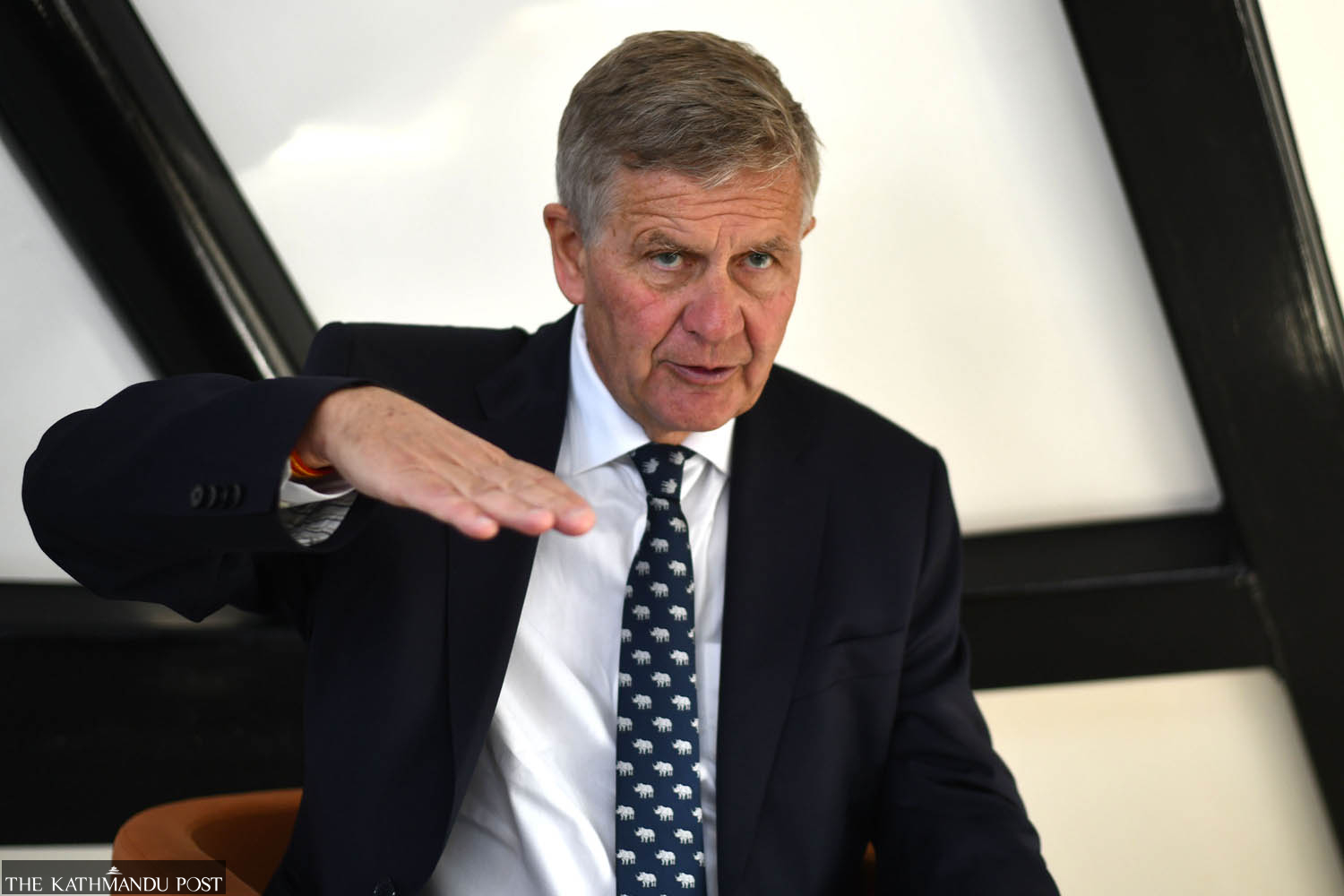
As some Chinese projects need to cross the Himalayas, many fear there could be environmental destruction triggering landslides and other incidents. How can we address such issues?
China is now the global leader, not just on environmental technology. It's also by far the biggest tree planter in the world. They have the largest national park system in the world. They've done very well with the giant pandas, with snow leopards, with different species of monkeys. So they are doing very well on environmental protection. However the population of China lives very far from Nepal. If you cross the border here, you go into Tibet. And there will still be nearly 4,000 kilometers to mainland China. India is closer. India and Bangladesh can be the markets for Nepal’s energy. The Indians look like the Nepalis, worship the same gods, and eat similar foods. They have similar languages. So it's a different relationship to China. But you can benefit from both.
China has decided to build a big project in Tibet, where many rivers originate. That definitely affects the downstream countries like Nepal, India and Bangladesh. How do you see this development?
This is potentially the largest hydropower anywhere in the world. The only advice I can give is to hold detailed dialogue with the Chinese on the potential effects on the lower rivers. Normally, there are not a lot of river effects of hydropower. What's the big effect? If you use the water for agriculture, irrigation, then it disappears. If you use it for hydropower, it will have constant flow. There has been a similar issue between Ethiopia, Sudan and Egypt around the river Nile. But as long as it's only a hydropower plant in Ethiopia, the effect on the other nations will not be so big. But there are many issues here which I cannot really understand. So dialogue between China and all the other nations is the essential way forward.
The UN Secretary-General visited Nepal in 2023. We, as a small country, are pleading for global support for the protection of the Himalayas. How can we get justice?
I 100 percent support the demand. That's completely fair. If you focus on what can be achieved, what you can do, you may get a lot more done. That's what Prime Minister Modi and President Xi Jinping are doing. They are focusing on the opportunities for their nation. Look, China had no car in the traditional car industry, no brand like, say, Toyota. What did they do? Leapfrog into electric cars to capture that market. I recently listened to Prime Minister Modi. He did not speak about climate justice, nor did he speak about climate horror. He just spoke about climate opportunities, how India can get solar, wind, hydrocarbons, storage, green hydrogen and use this to uplift its people, create more prosperity, and bring all Indians up into the middle class. It was just about how to merge the environment and economy. I think that's much more likely to succeed. The demand for justice is there, but seeing opportunities will take the nation further.
Nepali lies between two huge carbon-emitting countries. But we haven’t been able to get much support from them.
Of course, both China and India have some benefits compared to Nepal. They have huge domestic markets of 1.4 billion people each. They have stronger governments, so they have some benefits. China also has a very educated industrial ecosystem and working class. However, for Nepal, look at the opportunities. Look at how solar power can be developed, how hydro can be developed. Nepal can establish the rules and regulations that make it possible for both China and India to invest in Nepal.
Let’s change track. You were famously involved in facilitating peace talks between the state and the Maoist rebels early in 2000’s when you were a Norwegian minister. You were in contact with leaders from major political parties in Kathmandu. Could you tell us something about the events back then?
I worked with them all. Girija Prasad Koirala, Sher Bahadur Deuba, Baburam Bhattarai, Prachanda [Pushpa Kamal Dahal], KP Oli, Madhav Nepal, and others.
Is it true that the Norwegians gave satellite phones to the Maoists during the insurgency?
No. That’s not true. But what is true is that we were the first to speak to the Maoists when they were still waging what they call the people’s war. At the time, they were up in the mountains and maybe sometimes in India. We were the first—except for India—to speak to them. We also hosted the first meeting between the Maoists and the American ambassador in Kathmandu. It was fun as the American ambassador was very scared because he had never met a Maoist in his lifetime.
But gradually the tension came down and he was happy and the Maoists were happy. And at the end of the day the peace process was an astonishing success. Not thanks to us but thanks to the Nepali actors. No one believes Nepal will go back to war. And that is the number one criteria for success.
How did you establish contact with the Maoists when they were underground?
We were involved in the peace process in Sri Lanka. Madhav Nepal, who was the head of the CPN-UML, contacted me and said, “Can you also help us, we have a problem in Nepal. We want a way to stop the war and we need to talk to the Maoists.”
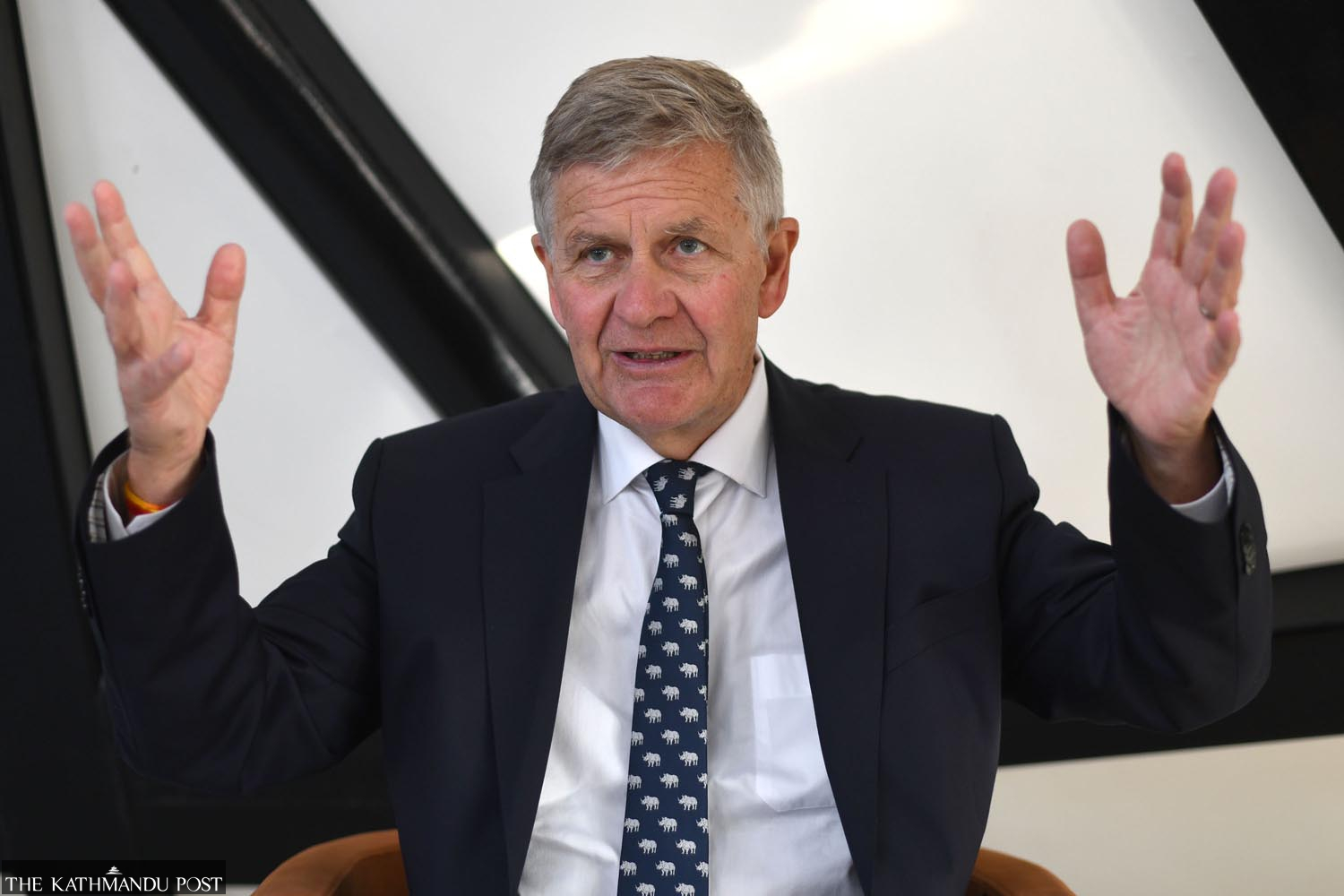
So the first initiative, in my guess, was taken by Madhav Nepal. He was a key figure. We started to reach out to the Maoists and see if we could have some dialogue with them. Some people said we shouldn’t speak to them because they are terrorists. But how can we have a peace process if we don't speak to them? We spoke to the Tamil Tigers in Sri Lanka. Gradually the situation improved. That's how we reached out.
Was it the Norwegian Embassy that arranged the meeting between the Maoists and the American ambassador in Kathmandu?
Yes. In the global peace efforts you must speak to people, which is the only way forward. You must speak to Hamas and the Israelis, you must speak to Ukrainians and the Russians. Some people say you should not speak to Putin. No. How can you make peace in Ukraine if you don't speak to Putin? It's crazy. That was the time when Prachanda was waging the people’s war up in the mountains in the western Nepal. I don't know the exact details of this, but they also sometimes took refuge in India.
What was discussed in that meeting you facilitated?
I think the Americans wanted to understand the Maoists and believe the Maoists were serious about peace. Because the Americans felt that maybe they were just fooling us. And they would try to go back to war. After some time, everyone understood they were serious.
When did this meeting take place?
I think we started this around 2005-2006. I can't recall exactly, but it came out of our engagement in Sri Lanka. Because that was very visible to everyone in South Asia. And then Madhav Nepal contacted us and we also reached out to them.
Eighteen years have passed since the signing of the Comprehensive Peace Accord. How do you evaluate the Nepali peace process?
I think it has been an astonishing success. When the war ended, the Maoists won the first election. They were integrated into politics. And no one thinks Nepal will go back to war. Yes, there is of course an issue with those who lost their lives—on both sides. People want justice for that. But overall, the peace process has gone fantastically well. What has not gone so well is the economic development of Nepal. Because Nepal still has a job to do to be at the same level as India or China.
There have been quick changes in government. Today, you meet one prime minister, next year there is another prime minister, and then there is another one. Instability makes it more difficult for investors. So if you can ensure stability that will help investment. For instance, when Indian Prime Minister Modi reconstituted his government, after 10 years, it was basically the same guys who returned to his Cabinet. And they've been in the same position for 10 years.




 8.12°C Kathmandu
8.12°C Kathmandu